CertiPUR-US® certified foam crib mattress from major U.S. baby gear company tests positive for 1,185 ppm Antimony (an identified cause of both SIDS and cancer)
All testing completed and reported on this website is readership-driven and completely independent of any input from, or considerations regarding, any sponsors or other parties.
Thursday, February 24, 2022 — UPDATE
- As initially speculated in the original post (below), it appears that this is likely a batch-specific issue, potentially only impacting certain batches of the product manufactured within a certain time period and/or from a specific country of origin.
- We are still working to try and determine which batch(es) may be impacted.
- In the absence of more data determining the full scope of the impacted batches, our recommendation — to set your mattress aside if you have one of these and cease using it as a mattress for infants until more information is known — still stands.
One additional set of test results
2/24/2022 Thursday
While we are still collecting more data, we have had the opportunity to test one more example of this product with a known date of manufacture and a known country of origin (the example noted below that we purchased from Amazon on February 13, 2022). This example was manufactured in January 2022 and the packaging and tags on the product stated “Made in Mexico.” This one additional example tested negative for Antimony in the foam of the mattress.
As a result of testing this additional example of the product, it does appear reasonable to assume that any newer (manufactured in 2022) “Made in Mexico” versions of these mattresses are likely negative for Antimony in the foam and — as noted as a possibility in the original piece below — this issue may be restricted to examples of the product that have overlapping parameters with the batch referenced below:
- Products noted as manufactured in or around June of 2020
- Products noted as Made in Malaysia
- Products noted with model 06710-400
- Products made with foam from Far East Foam Industries
Said another way: If you have one of these mattresses that is noted as “Made in Malaysia,” I would set it aside until further testing is reported (or until the company makes a statement or issues a recall). Separately, if you have one of these mattresses made from 2019 through 2021, I would also set it aside until more information is shared (by Lead Safe Mama, LLC or the manufacturer), helping to identify the parameters of the impacted batch(es).
We will share more information as soon as we have anything additional confirmed. We are working on testing examples from other known batches and will also report those test results on this website. Separately, as anticipated, attorneys representing the company that manufactures the product contacted us (three days after this original article published) and — as promised — the full exchange with those attorneys can be read here, in this post (linked).
Original content from 2/14/2022 — Monday
This article has 10 sections of information broken out below:
- Preliminary overview/ Summary of findings
- Seven examples of modern bedding Lead Safe Mama, LLC has tested
- Why is Antimony a problem?
- Misleading certification considerations
- Specific concerns given these findings
- California considerations (relevant new 2020 legislation)
- Recommended course of action for the manufacturer/ Graco
- Recommended course of action for families who purchased this product
- Do crib mattresses normally test positive for Antimony?
- Lead Safe Mama, LLC next steps in this inquiry
Published: Monday, February 14, 2022
Section #1)
Preliminary overview/ Summary of findings
- In a Lead Safe Mama home consultation with a family in February 2022, we used XRF technology to test a foam crib mattress for a crib a grandmother has in her home and uses when the grandchildren visit.
- The mattress was purchased on November 23, 2020 (see customer screenshot above) and manufactured in June of 2020 (see a photo of the mattress tag below).
- The mattress tested positive for Antimony at levels as high as 1,185 parts per million (ppm).
- Antimony at this level is only present when a mattress has been treated with chemical flame-retardants that contain intentionally-added Antimony as part of the flame-retardant mixture.
- Antimony in flame-retardants in crib mattresses has been linked to SIDS (Sudden Infant Death Syndrome) and is no longer normally used in crib mattresses.
- Synthetic fabrics, furniture foams, and fillings (including poly-fil type products) not treated with flame-retardants either test negative for Antimony, or test positive for trace levels of Antimony (with Antimony levels typically found to be under 100 ppm in modern, untreated mattresses and bedding made of synthetic elements — see some examples below).
- The mattress in question that is the subject of this article is a Graco Premium Foam Crib & Toddler Mattress purchased (from Amazon) by the family on November 23, 2020.
- The “Date of Delivery” on the tag is noted as June of 2020 (with the assumption being that this was when the product was delivered to the distributor in the United States). This is also noted on a separate tag from the mattress (image below) as the “Date of Manufacture.”
- The tag on the mattress states that it was “Made in Malaysia” for Stork Craft Manufacturing, Inc in Canada.
- The mattress is clearly noted as being both Greenguard Gold-certfied and CertiPUR-US®-certified in the advertising (on Amazon, which is where the grandmother purchased the mattress shown below).
- These certifications materially influenced the grandmother’s decision to buy that mattress.
- The screenshot below says “2021 Edition,” as that is a screenshot from February, 2022. The customer did not take a screenshot of the listing when she purchased the mattress in November of 2020, however the language about the description of the mattress and the certifications was the same at that time (with the exception being the noted “2021 Edition” label).
Please continue reading below the image.
Additionally, there was a tag on the mattress (image below) with the following two important points of note:
- The tag has a section (with an X next to it) that states “CONTAINS NO ADDED FLAME RETARDANT CHEMICALS.“
- This tag also clearly states the following: “THE STATE OF CALIFORNIA HAS UPDATED THE FLAMMABILITY STANDARD AND DETERMINED THAT THE FIRE SAFETY REQUIREMENT FOR THIS PRODUCT CAN BE MET WITHOUT ADDING FLAME RETARDANT CHEMICALS. THE STATE HAS IDENTIFIED MANY FLAME RETARDANT CHEMICALS BEING KNOWN TO, OR STRONGLY SUSPECTED OF, ADVERSELY IMPACTING HUMAN HEALTH OR DEVELOPMENT.”
Fact: There is no possible explanation for Antimony to be found in this mattress at the levels discovered (which is above 1,000 ppm) except as a component of added flame-retardant chemicals. This is a finding that contradicts both the tags on the mattress and the advertising statements on Amazon. This fact is also in conflict with the “non-toxic” certification this mattress touts.
Continue reading below the image.
Section #2)
Examples of modern mattresses (and bedding) Lead Safe Mama, LLC has tested
For background context, it is important to note the XRF test results we have published for other mattresses we have tested — specifically, the Antimony levels for those mattresses — here are each of the examples listed on this website (each numbered point is linked to the article with full test results for that item):
- 2003 Sealy Posturepedic Mattress: 91 ppm Antimony
- 2006 Tempurpedic Mattress: 98 ppm Antimony
- 2015 Beautyrest Mattress: 3,283 ppm Antimony
- 2017 Beautyrest Mattress: 89 ppm Antimony
- 2017 Sertapedic Mattress: 1,370 ppm Antimony
- 2019 Pure Down Pillow: 75 ppm Antimony
- 2020 Graco Premium Foam Crib Mattress: 1,185 ppm Antimony
What the above examples demonstrate is that newer (synthetic material) mattresses (and pillows) tend to fall into two classes as far as Antimony content:
- Under 100 ppm Antimony
- Over 1,000 ppm Antimony
Those (synthetic mattress options) not treated with Antimony-containing flame-retardant chemical mixtures tend to test positive for Antimony at levels below 100 ppm (which appears to be a trace contaminant of the manufacturing process at that level, not an intentionally-added ingredient), whereas a mattress treated with Antimony-containing flame-retardant chemical mixtures will typically test positive for Antimony at levels of 1,000 ppm and higher.
Section #3)
Why is Antimony a problem?
The three images below are screenshots from websites that help to explain why Antimony is a problem:
- Added flame-retardants have been linked to SIDS (Sudden Infant Death Syndrome) as of March 2011:
- The first of the three images directly below is the results of a quick Google search on the question “Are flame retardants links to SIDS.” Countless links popped in response to this search and the first one (shown with the typo in the search query!) clearly states that “The presence of flame retardants in crib mattresses have been linked as a cause of Sudden Infant Death Syndrome” and “As the number one cause of death in children twelve months old and younger, SIDS kills an average of 2,500 infants each year.”
- Specifically, as far back as 1994, it was determined that increasing Antimony levels in added flame-retardants has been linked to SIDS. This is in the second of the three screenshots below:
- Of primary interest in this abstract from a study done in 1994 (and published on pubmed) is the final sentence of the paragraph in the screenshot: “In England and Wales, the progressive increase in SIDS between 1951 and 1988 seems to be related to increasing use of Phosphorous and Antimony compounds as fire retardants in [crib] mattresses.“
- The third of the three screenshots directly below is from an article that notes that Antimony has recently [December 2021] been officially added to the list of known carcinogens:
- In December of 2021 “The US Department of Health and Human Services (HHS) added 8 new substances to the 15th report on carcinogens, bringing the total to 256 substances.” Antimony trioxide is among the 8 newly reviewed substances. “Antimony trioxide is primarily used as a flame retardant in plastics, textiles and other consumer products.”
Continue reading below the images.
Image 1 of 3

Image 2 of 3
Image 3 of 3
These are just three examples from quick Google searches discussing considerations of the concern for Antimony in flame-retardant compounds that have been causally-linked to Sudden Infant Death Syndrome (SIDS). While no crib mattress should ever contain these substances (given what we know now — and have known for nearly at least three decades) one would especially expect a mattress with not one, but two “non-toxic” certifications (CertiPUR-US® and Greenguard Gold) not to contain toxic heavy metals like Antimony at levels that are (with no question) a definite additive to the product.
Screenshot from the CertiPUR-US® website, February 14, 2022:
please continue reading below the image.
Section #4)
Misleading certification considerations
- The CertiPUR-US® certification
- This certification comes with the promise of no added heavy metals to the products in question. Their specific language is “Made without mercury, lead and other heavy metals.” Antimony is a heavy metal. Antimony is definitely in the mattress in question — at a level that unequivocally defines it as an additive (over 1,000 ppm). Consequently, this certification, at least as it applies to this Graco mattress, is false and misleading. Regardless of the timing of the action of the Antimony being added to the foam (the manufacturing phase in which the Antimony was added), the foam of the mattress does contain Antimony and Antimony is a toxic heavy metal. The certification sets a clear reasonable expectation and sense of assurance that there are no toxic heavy metals in a finished product using this certified foam. Note: To be clear… the component of the mattress that tested positive for Antimony at the levels discussed is, in fact, the BARE FOAM of the mattress. We have discussed this (the issues with the CertiPUR-US® certification) ad nauseam — in this article (1), this piece (2), this article (3), and here as well (4) — after finding Lead at a potential “additive level” (a low level but still slightly in excess of what might be considered “trace contamination”) in a couch that was marketed “Lead-free.”
- Separately, EWG (Environmental Working Group) has called into concern (earlier this month) the validity of the CertiPUR-US® certification, noting it gives a false sense of security that a product is essentially safe when it may not be (for reasons beyond what is stated in the certification parameters). Here’s the link to the EWG piece, which states: “Consumers may believe the mattresses they’re buying are free from harmful substances when they see the certification, but this declaration is misleading. It’s an industry-backed standard developed with weak requirements…”
- The Greenguard Gold certification:
- This certification appears to only cover VOCs — which is outside of the scope of the work of Lead Safe Mama, LLC. However, I want to state that (in a way) the two certifications together carry quite a lot of weight in influencing parents (or grandparents) to purchase these products (more so than a single certification standing alone might). So while that certification may, in fact, be legitimate (and I have reviewed some details of this certification with experts in the field who have expressed there are also gaps in the legitimacy of this certification) I think you (the consumer) should be wary of ANY certifications on products (especially products made from synthetic components) — because they may (singularly or together) give the consumer an undeserved/ false sense of security about the actual safety of a given product.
Section #5)
Specific concerns given these findings
- Risk to infant: Antimony in bedding carries the following risks and should not be used in any bedding — let alone any infant bedding — in 2022+ (there is just no excuse for this chemical being in a baby’s bed, especially when a parent or grandparent bought that particular bed believing based on false claims that it was free from heavy metals and other chemicals that may cause harm):
- Cancer Risk
- SIDS Risk
- Respiratory Distress Risk (Antimony primarily presents inhalation risks to both consumers and factory workers)
- False Advertising: The issue of false advertising is hugely concerning. It is not just one single claim, but (as noted above) the combination of claims that together made the buyer reasonably assume this mattress was a safer choice. I believe a legal case could be made against Graco (and other involved parties in their manufacturing supply chain and certification process) in that their false advertising of this product (as non-toxic) put children at a real and possible risk of harm. The big question for me (given CertiPUR-US®’s involvement with this product and their recent history of trying to deflect blame) is this: At what point was the Antimony added to the foam? Was it added during the foam production process in Malaysia? (This is the most reasonable assumption.) And once that data point is resolved, my second question is at what point did CertiPUR-US® certify the product as non-toxic? Was there Antimony present in the samples that were certified? How was that overlooked? If that is the case, then CertiPUR-US® again certified a product with heavy metals used in the manufacturing process as “made without” heavy metals, and this particular example is more blatant and clear-cut (than the previous one) given the very-high levels of Antimony found. CertiPUR-US® leadership will likely argue (as they have with the other situation reported on this website) that the heavy metals were added AFTER the certification process, which might have been the case, however nothing short of a legal investigative inquiry (using science at each step of the way!) will be able to make that determination.
Section #6)
California Considerations
California always seems to have the most progressive (protective of human health) and strictest standards for the presence of toxicants in consumer goods, so I felt that was important to cover here as well – as it relates to their latest requirements for furniture (including mattresses). This is especially relevant given the mattress in question is listed as an Amazon “Best Seller” and so was also likely sold in California during the period in question.
Please check out the five screenshots below which each have information on the new California standards. To summarize the information (highlighted in the screenshots below – which were among the first links to pop up when doing a google search for information related to the new California legislation around flamer retardants:
- The new legislation was approved on August 29, 2018.
- The new legislation went into effect on January 1, 2020.
- The new legislation banned halogenated, organophosphorus, organonitrogen, and nanoscale flame-retardant chemicals above 1,000 ppm.
- This ban specifically covers juvenile products (products for humans under 12 years old) and mattresses for juveniles (this includes crib mattresses).
- Antimony appears to be one of the specific flame retardant designated chemicals restricted with this directive (I am waiting to hear back from representatives with the State of California to confirm this.) [Click here for the source page with designated chemicals lists. Click here to see the most recent [June 2021] designated chemical list as of the time of publishing this post – which includes Antimony, which can be found on page three of the report.] I have also uploaded a PDF of the June 2021 report here to this website in case you have trouble loading int on the California Biomonitoring website – link. [Screenshot below is from wikipedia.]
- Important Point: The mattress in question (the subject of this post) was manufactured after this legislation became effective – specifically six months after (June of 2020.)
- Second Important Point: The mattress in question (the subject of this post) was sold after this legislation became effective – specifically eleven months after (November 2020.)
- Third Important Point: The mattress in question (the subject of this post) was manufactured after this legislation became effective yet tested positive for Antimony (which appears to be one of the restricted flame retardant chemicals – see note above) at levels above the new California legislative limit (levels above 1,000 ppm.)
- Fourth (Most?) Important Point: The mattress in question was sold by a vendor (Amazon) that could have (and like did) shipped units with similar test results to California, thereby potentially violating the new California law.
- Finally – I really love the very last line of the fifth screenshot below: “With regard to this last step, while formulation analysis may provide insight to the levels of a flame retardant in a product, enforcement of the statue is based on product testing. Accordingly there is no “safe harbor” for violations that might occur as an unexpected result of the manufacturing process.”
Screenshot #1 of 4: New California Legislation
Continue reading below the screenshots

Screenshot #2 of 4: New California Legislation
Continue reading below the screenshots
Screenshot #3 of 4: New California Legislation
Continue reading below the screenshots
Screenshot #4 of 4: New California Legislation
Continue reading below the screenshots
One more screenshot (#5)
(click through to see the source article, which is from a law firm)
Section #7)
Recommended course of action for the company
There is only one responsible course of action here, in light of all of the above considerations: Given the clearly false advertising claiming that the product is flame-retardant-free / non-toxic / has no added heavy metals, combined with the serious potential health risk to children who are sleeping on these mattresses (given the Antimony levels found), the responsible thing for Graco to do at this moment is to initiate an immediate, full and public recall for this product (and any related products that may have been impacted) —offering refunds and replacement (safe) products to those who request it.
The secondary course of action is for the company to immediately initiate additional testing on the products to determine if this is a batch specific issue or if this is an ongoing problem (if this significant potential health risk impacts all of their CertiPUR-US® certified and Greenguard Gold-certified Graco products that use foam) and if they need to recall products beyond this specific mattress (from whichever time period they determine to be the impacted batch.)
A third course of action for this company (based on this and other findings related to the CertiPUR-US® certification), is that they may want to reconsider their relationship with this (and other) certification standard(s) — as there appear to be significant gaps in the CertiPUR-US® testing and certification process that something like this could be allowed to happen.
Continue reading below the image
This is the mattress that I tested, which the owner immediately put out at the curb with the garbage!

Section #8)
Recommended course of action for the families who purchased this product
The image above is of the mattress that I tested out by the trash afterwards on the day that I tested it. I actually think that all of these mattresses (in whatever is determined to be the impacted batch) should be destroyed. [The most prudent course of action might be to cut the mattress in half so that it cannot be retrieved from the trash to be used by another family — because someone might otherwise imagine they have found a “perfectly good crib mattress” that someone was merely discarding just because they no longer needed it!]
HOWEVER since the batch-date-range of impacted mattresses is not yet known it would be a prudent first step if you purchased one of these mattresses to first put it aside (in the garage? in a large plastic contractor bag?) until we can gather more information from the company and any follow up testing that needs to be done to help identify the range of impacted products.
Another prudent course of action might be to get a heavy metals test for your child (specifically either a hair test or urine test that would result in a full metals panel). This would be the only way to know if your child tests positive for high levels of Antimony. Please read this linked post and ask your doctor about getting a test like this for your child.
In purchasing a new crib mattress, I highly recommend avoiding ANY AND ALL CertiPUR-US® certified foam mattresses because this is not the first issue I have found with this certification. At this point, I fundamentally recommend avoiding any polyurethane foam mattresses, if at all possible — and purchasing the best mattress you can afford that is made of natural materials. Please look up “mattress” or “crib mattress” using the search bar on this website to see both all of the brands of mattresses I have tested (with their full XRF test results) as well as my recommendations.
Section #9)
Graco Baby Mattress Discussed Here (June 2020 date of manufactuer & November 2020 customer purchase date) Specific XRF Readings
Mattress Reading #1)
Through Fabric
- Lead (Pb): non-detect
- Cadmium (Cd): non-detect
- Mercury (Hg): non-detect
- Bromine (Br): non-detect
- Chromium (Cr): non-detect
- Iron (Fe): 393 +/- 74 ppm
- Copper (Cu): 75 +/- 35 ppm
- Titanium (Ti): 5,192 +/- 634 ppm
- Tin (Sn): 112 +/- 31 ppm
- Antimony (Sb): 993 +/- 58 ppm
- No other metals detected in consumer goods mode.
Once we found this reading, we removed the washable outer cover and tested the mattress again, without the cover, which resulted in the reading below.
Mattress Reading #2)
On the Foam Directly
- Lead (Pb): non-detect
- Cadmium (Cd): non-detect
- Mercury (Hg): non-detect
- Bromine (Br): non-detect
- Chromium (Cr): non-detect
- Iron (Fe): 656 +/- 82 ppm
- Copper (Cu): 52 +/- 32 ppm
- Zinc (Zn): 25 +/- 14 ppm
- Tin (Sn): 170 +/- 34 ppm
- Antimony (Sb): 1,185 +/- 63 ppm
- No other metals detected in consumer goods mode.
Section #10)
“Is this unusual?” & “Do crib mattresses normally test positive for Antimony?”
The quick answer to this is “Yes”, this is unusual, and “No”, modern crib mattresses do not normally test positive for Antimony. Ever since the findings of the potential connection to SIDS, the practice of adding Antimony-containing flame-retardants to crib mattresses appears to have all-but-ceased (although obviously there are exceptions.) I have tested hundreds of modern crib mattresses in recent years and this is the first that I have found to have a high level of Antimony. This is why it is so outrageous to have found Antimony in this Graco CertiPUR-US® certified foam crib mattress. Not only is it “certified” (twice-over!) in a way that was clearly intended to convince parents that it was a non-toxic option, but even in the absence any special “certification”, modern crib mattresses do not normally test positive for Antimony at levels like this one did – levels that clearly indicate Antimony was used as an intentional additive.
Section #10)
Lead Safe Mama, LLC next steps
- The owner of the mattress tested for this post notified Graco of the testing that we did shortly after the testing was done (earlier this month, February 2022).
- She is awaiting this post to be published and will share it with Graco once it has been published.
- I will be personally filing a Consumer Product Safety Commission recall notice for this crib mattress — linking this post (which is one reason I have made the effort to be as thorough as possible in describing both the specific issue and the bigger concerns with the issue.)
- I will also be filing a report with the State of California given this is a national brand and likely had units that were shipped to California (in violation of the new legislation.)
- I have purchased (new from Amazon) one of these mattresses. It was purchased yesterday (2/13/2022) and should be delivered to me next week (in fact I used the last $90 available in the Lead Safe Mama business account to make that purchase(!) – so – as this work is a community collaboration with my readers – any contributions in support of that purchase would be most welcome!)
- Once I receive this mattress in the mail, I will do additional testing and a follow-up post (here on LeadSafeMama.com) with those test results [which will be more extensive than the testing I normally do during a home consultation; what this generally means, is longer-duration XRF analysis testing — tightening up the instrument’s nominal margin of error — so the test results will have an even higher degree of accuracy.]
- Based on my experience, I anticipate that I may likely get letters from lawyers for the various companies involved with this product (be it the CertiPUR-US® folks, or Graco). This is especially likely for any entities that seek to deny or evade responsibility for this situation. I will (as always) publish those letters and the contact information for the people who send those letters here on LeadSafeMama.com. I always hold out hope that the first response of a company is to thank us for this work – to thank us for bringing this issue to their attention (not to send lawyers after us), and if that is the case (and the company acts responsibly) I will publish that exchange as well.
- Once this is resolved (if a recall is mandated by the government or if a recall is voluntarily initiated by the manufacture – which one hopes will happen), I will publish a resolution post along with any recall notices.
Here are some links to other posts here on LeadSafeMama.com that might be of interest to you:
- A post discussing the testing methodology used for test results reported here on LeadSafeMama.com
- More posts about furniture and decor items we have tested.
- More posts with “CertiPUR-US®” products.
Thank you for being here.
Thank you for reading and sharing about this work — independent consumer goods testing directed and supported by the readers and social media followers of all accounts related to Lead Safe Mama, LLC (Instagram, Twitter, Facebook – and direct readership here on the website!)
If you have any questions, please feel free to ask them in the comments on this post. I will do my best to answer them as soon as I have a moment (however, it may take a while, given I often have my hands full with children since the start of the pandemic especially, so please be patien).
Tamara Rubin
#LeadSafeMama
Owner — Lead Safe Mama, LLC
Portland, Oregon, USA
For those new to the Lead Safe Mama website:
Tamara Rubin is a multiple-federal-award-winning independent advocate for childhood Lead poisoning prevention and consumer goods safety, and a documentary filmmaker. She is also a mother of Lead-poisoned children (two of her four sons were acutely Lead-poisoned in 2005).
- Tamara owns and runs Lead Safe Mama, LLC — a unique community collaborative woman-owned small business for childhood Lead poisoning prevention and consumer goods safety.
- Since July 2022, the work of Lead Safe Mama, LLC has been responsible for six product recalls (FDA and CPSC).
- All test results reported on this website are science-based, accurate, and replicable.
- Please check out our press page to see some of the news coverage of our work, linked here.
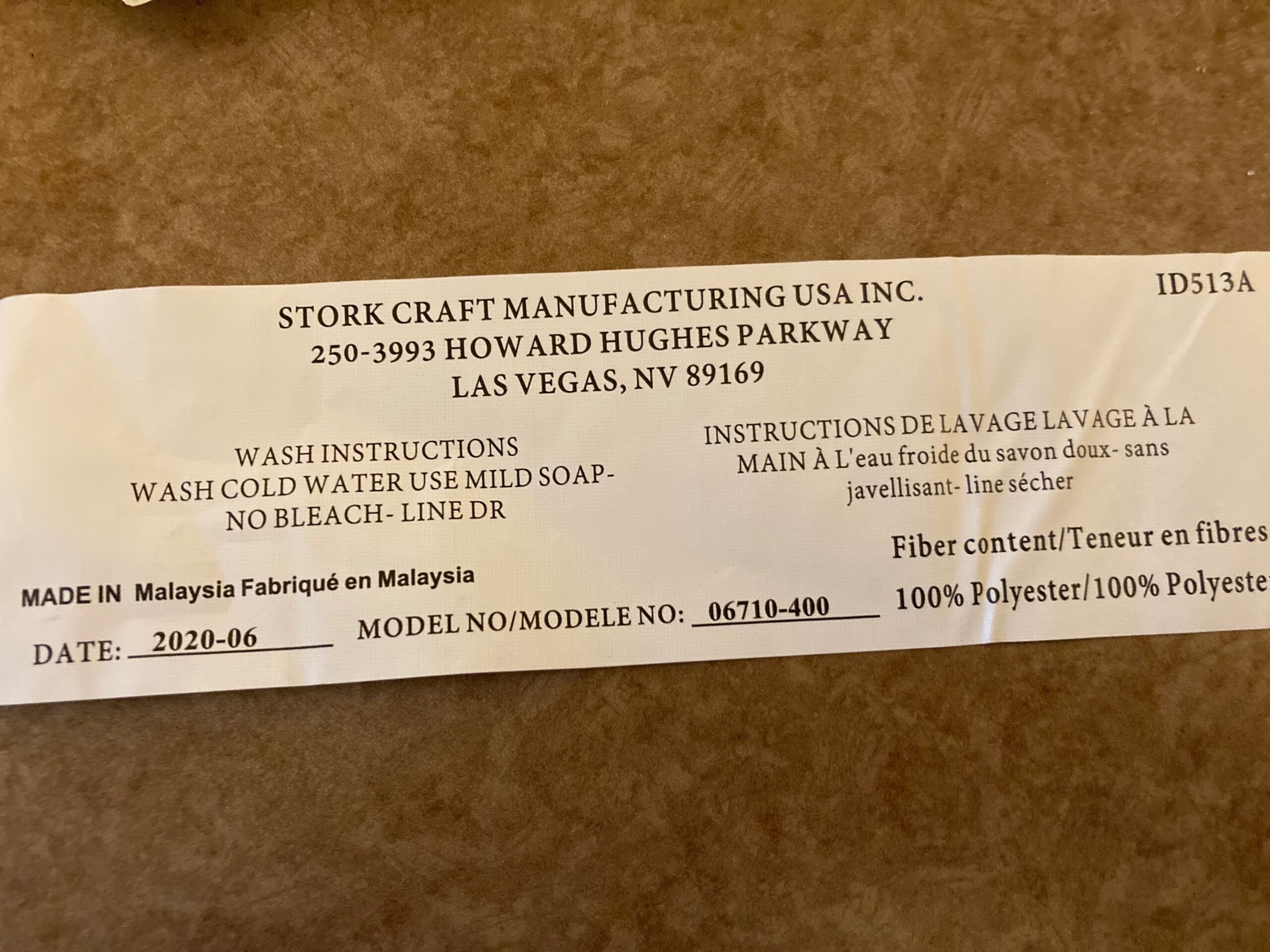
Never Miss an Important Article Again!
Join our Email List





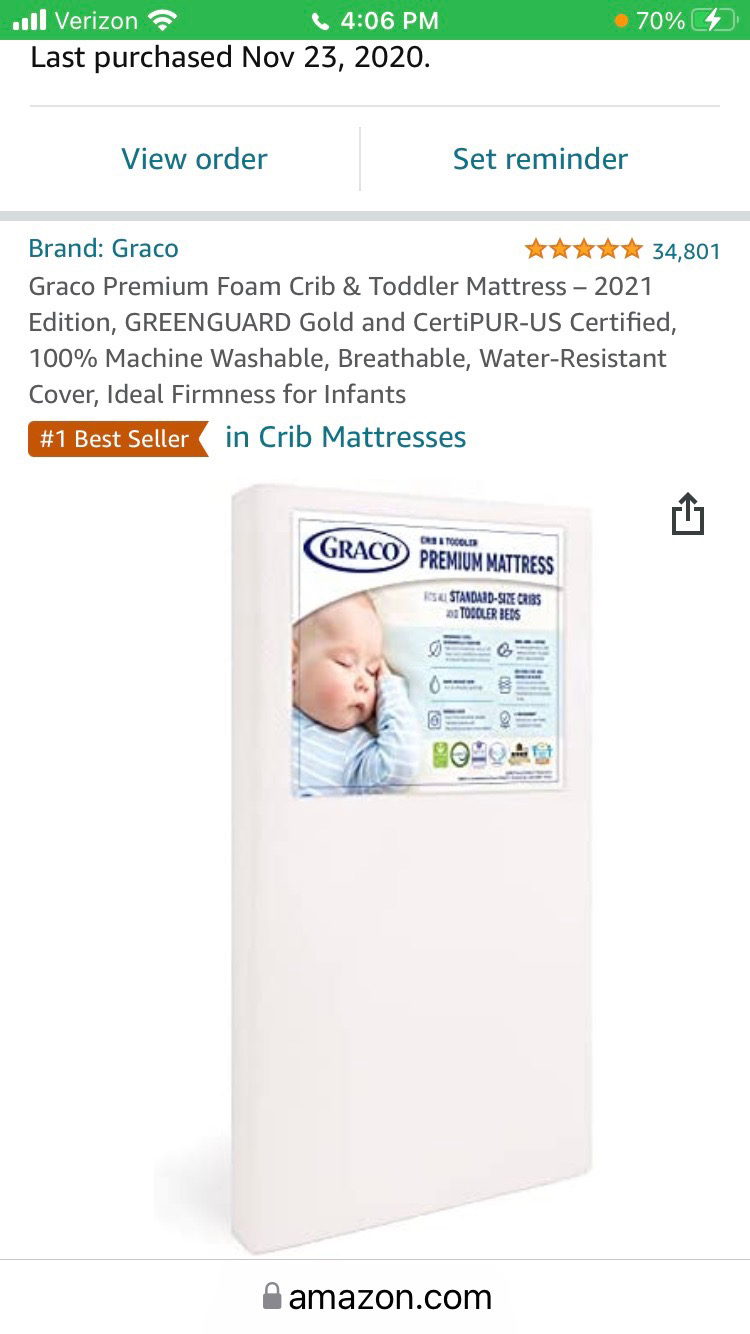
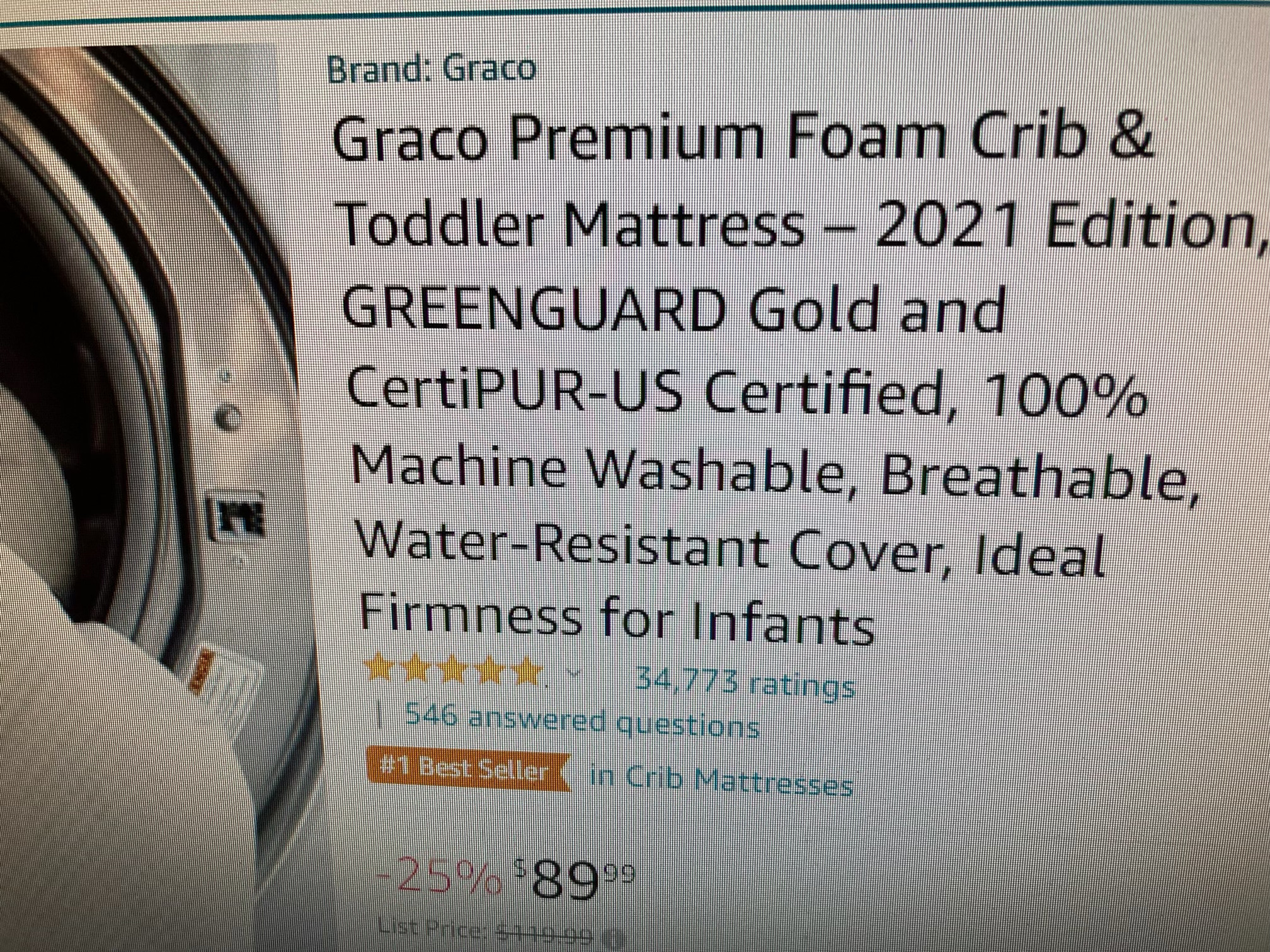
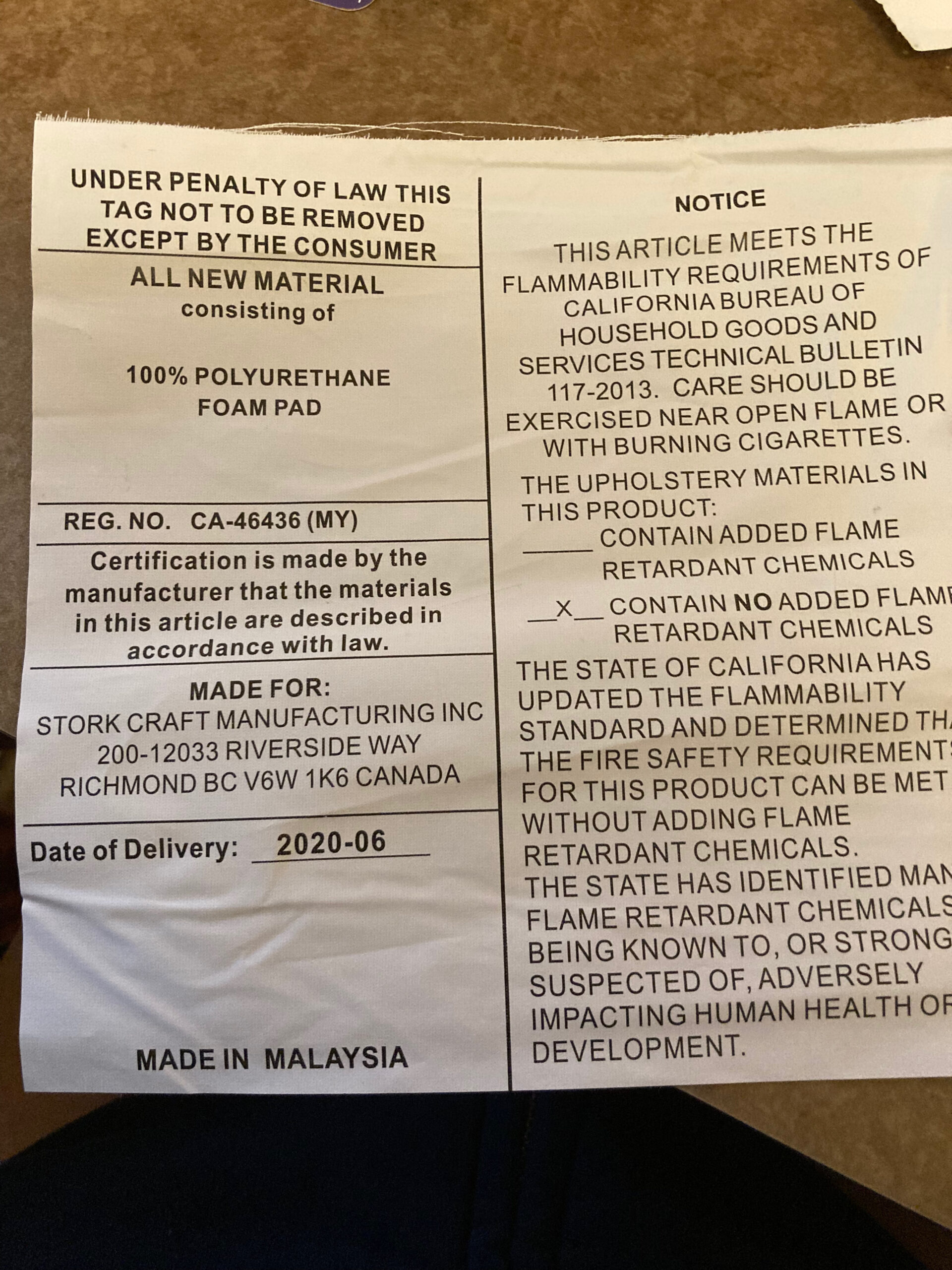
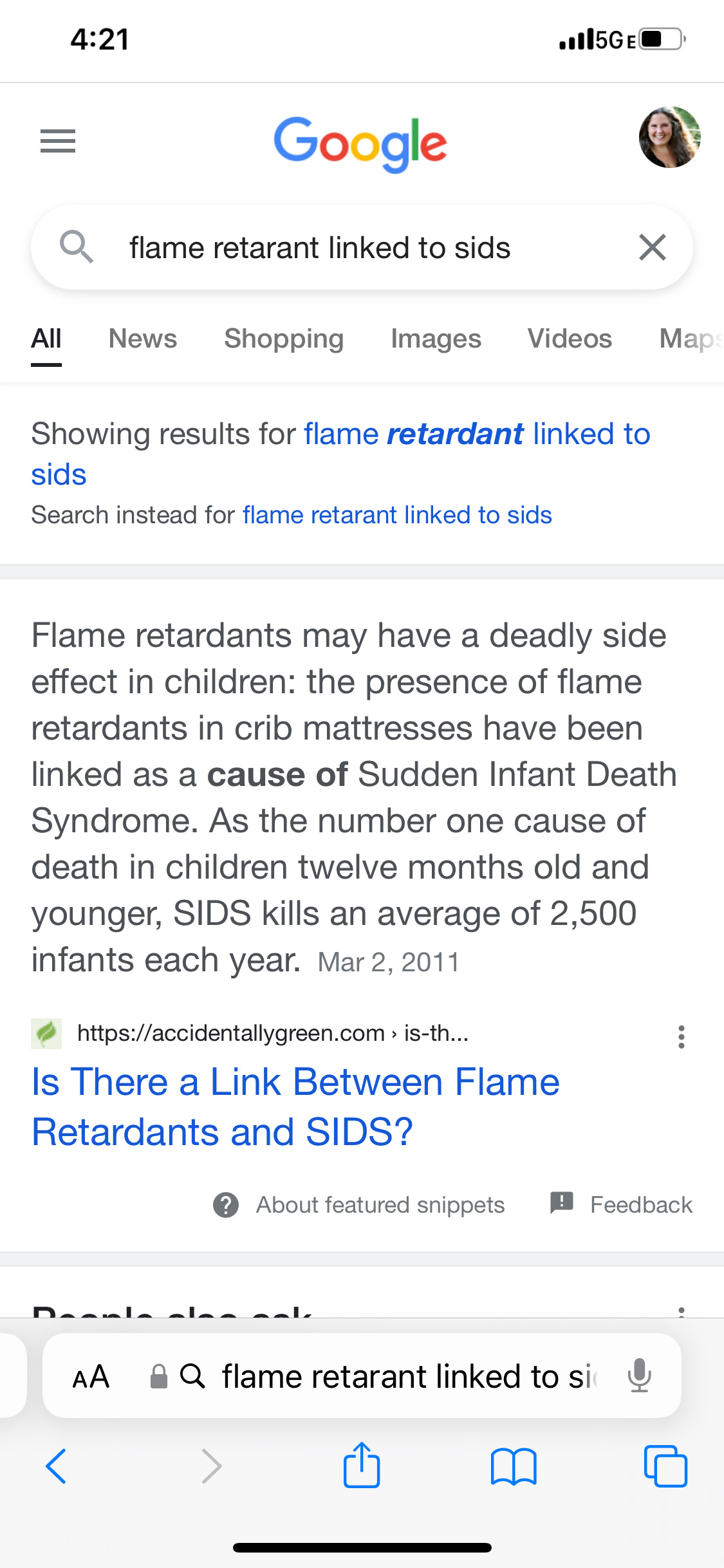
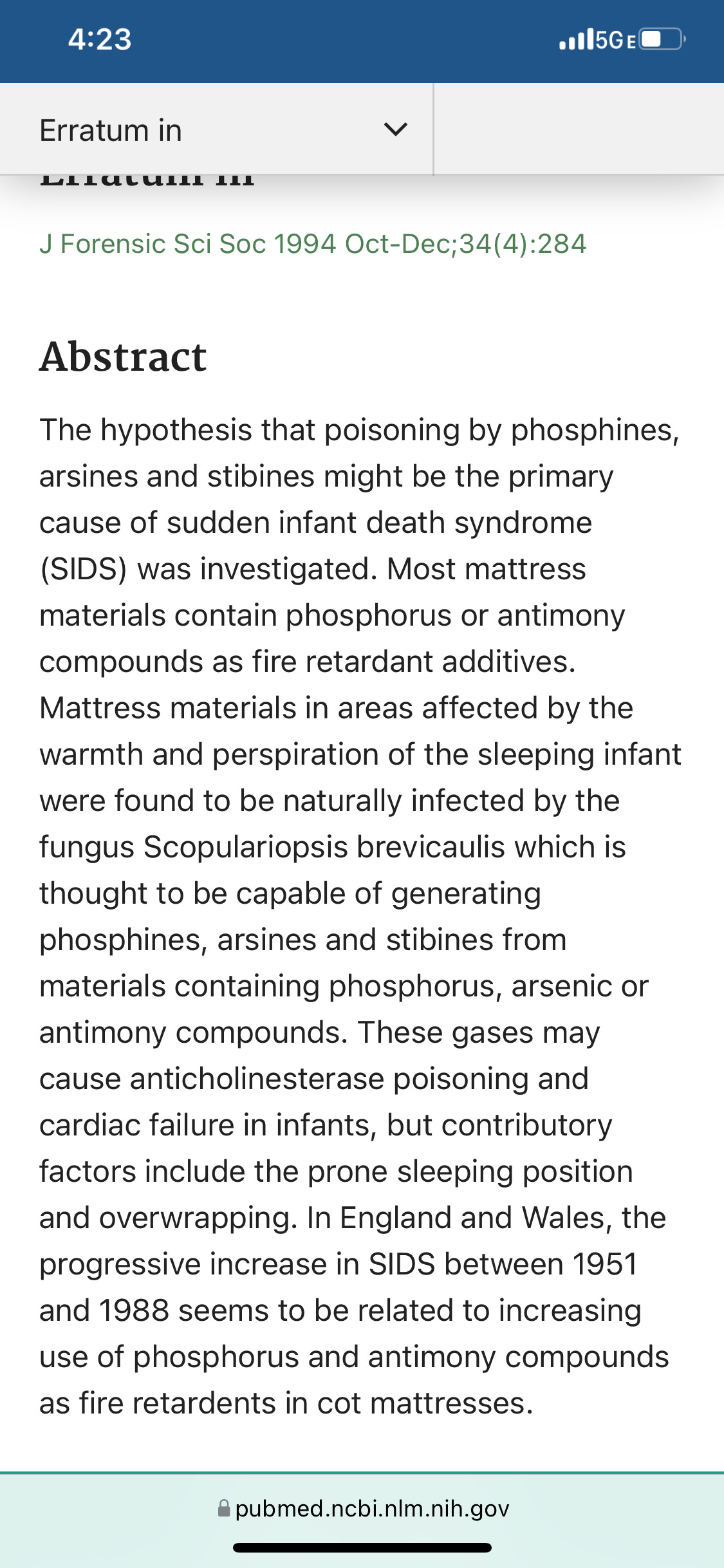
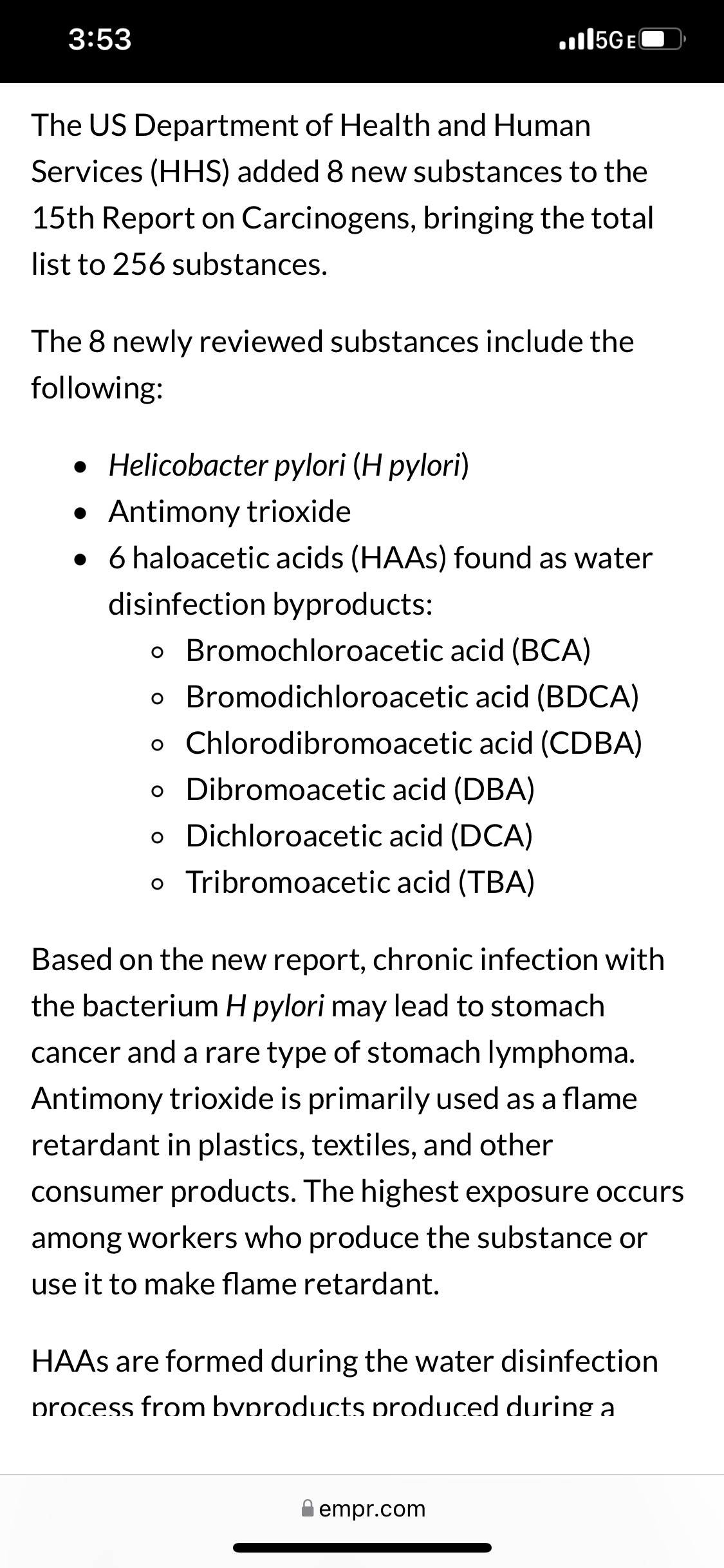
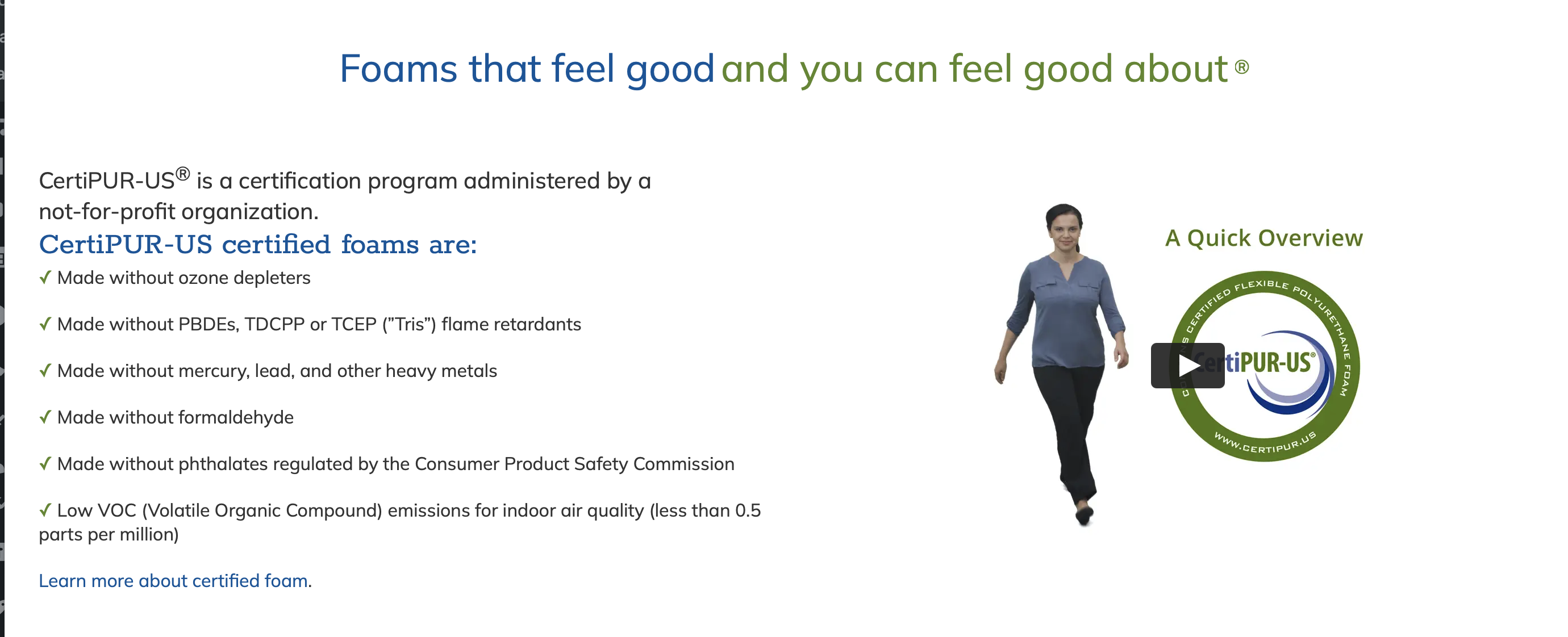

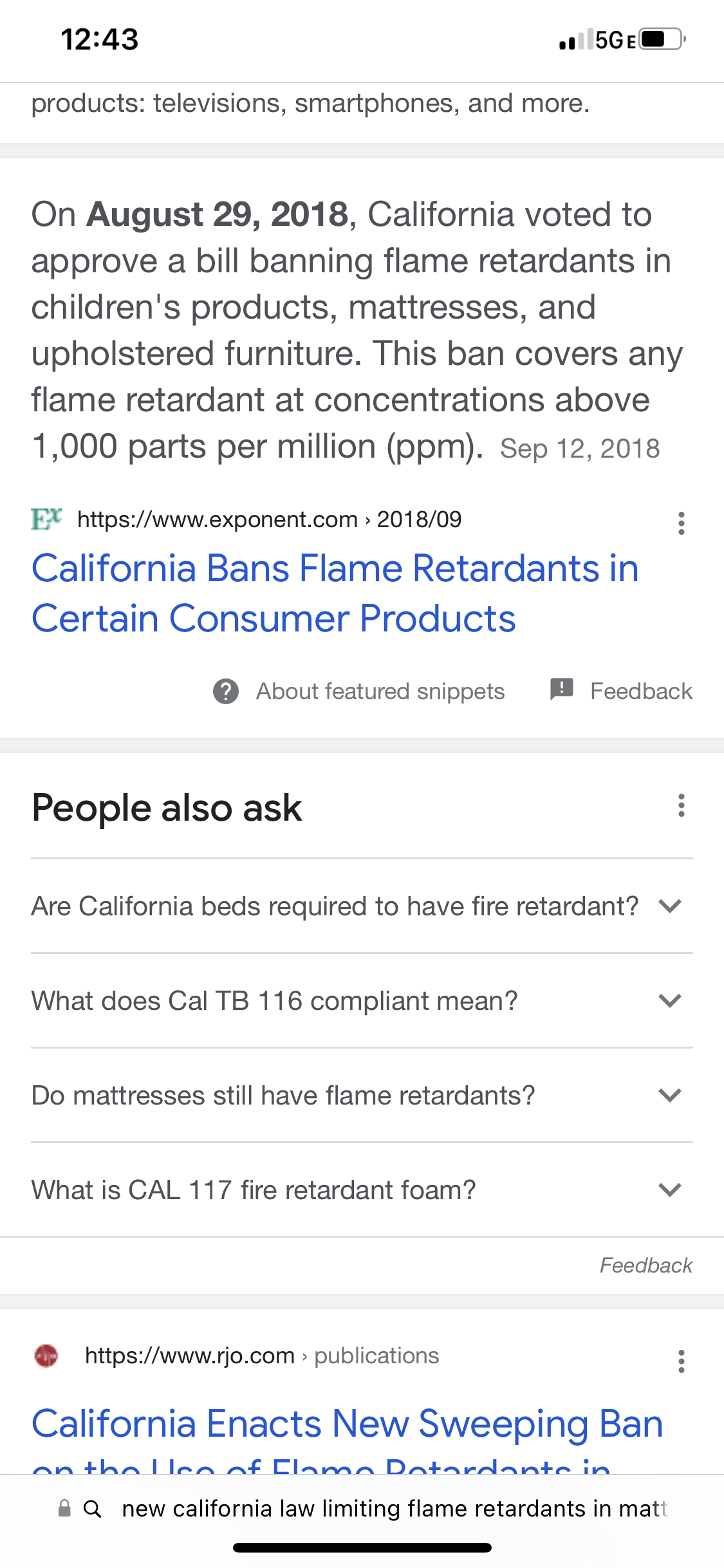
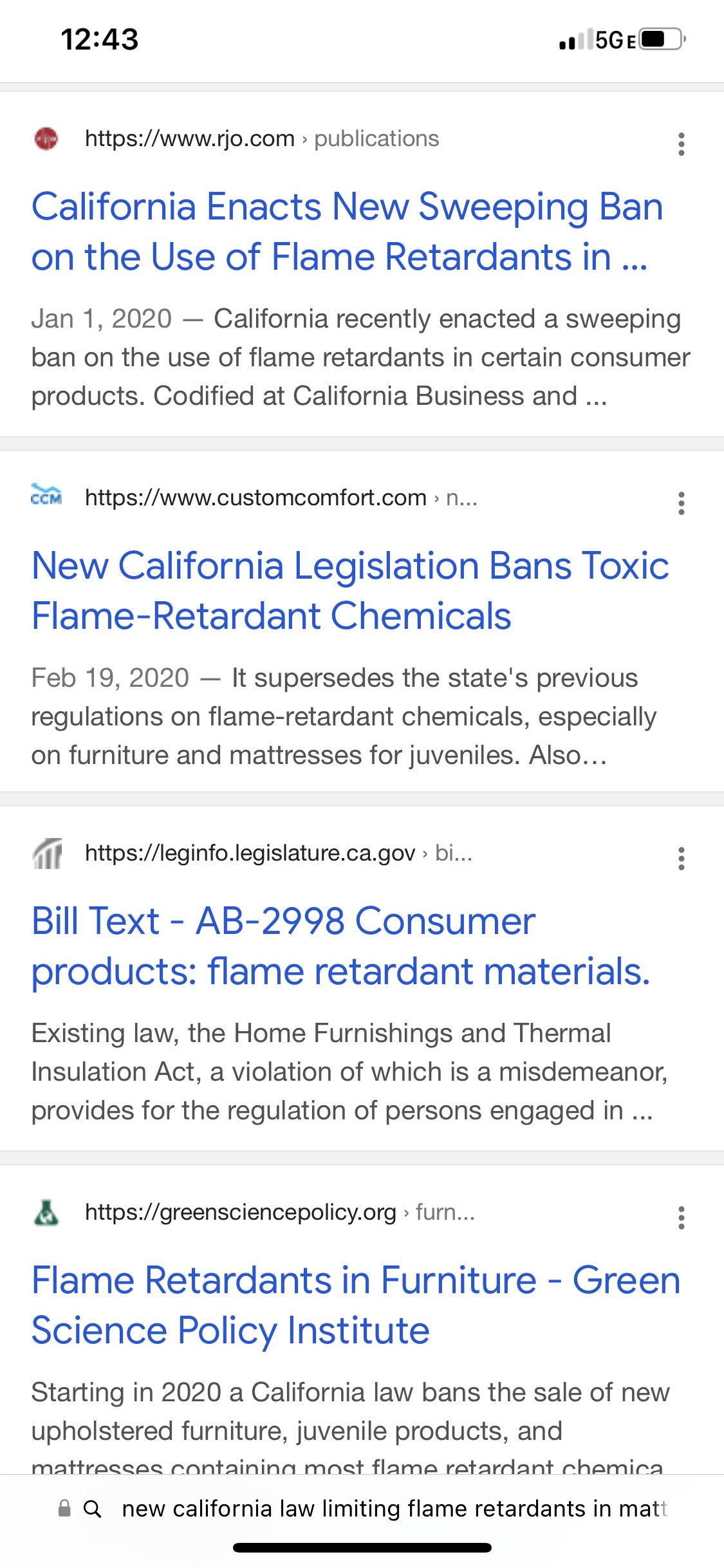
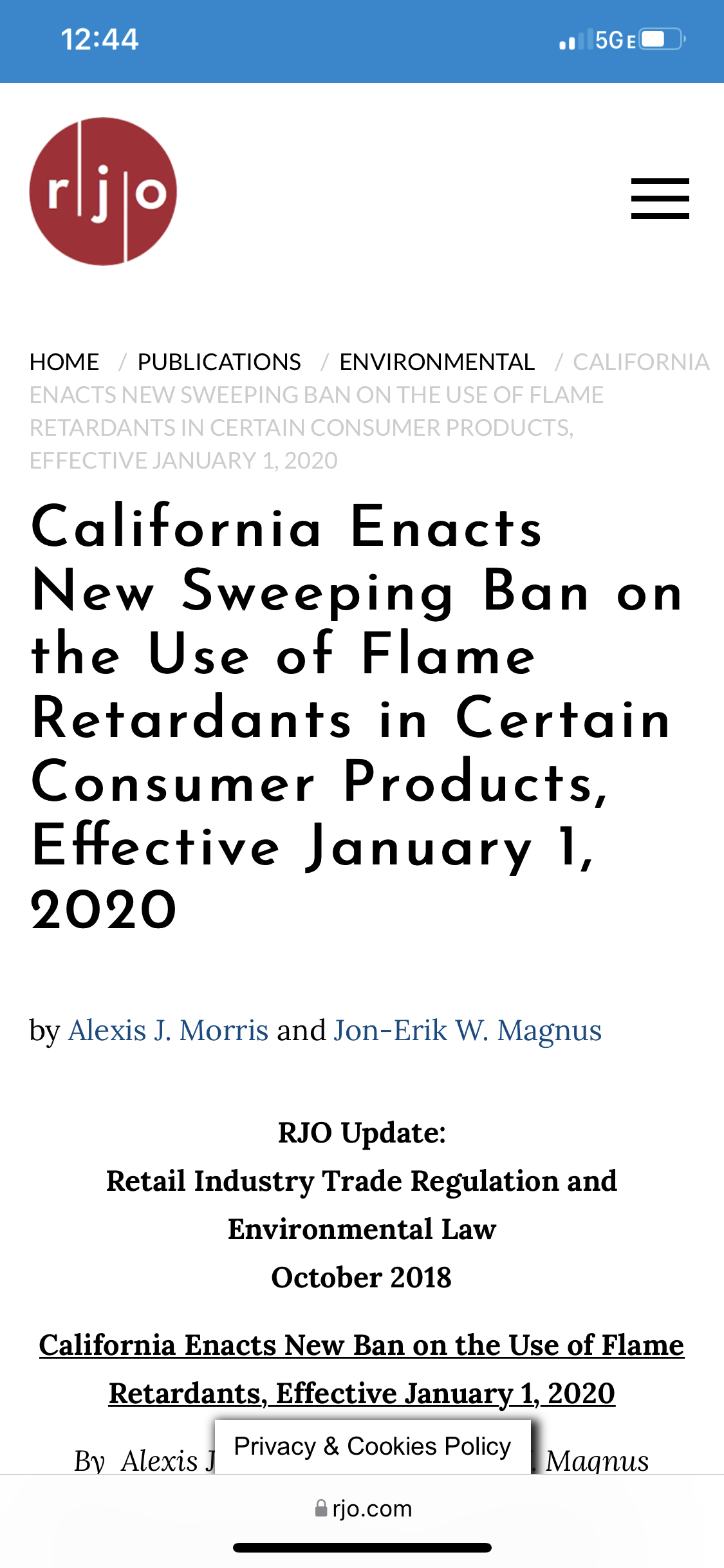
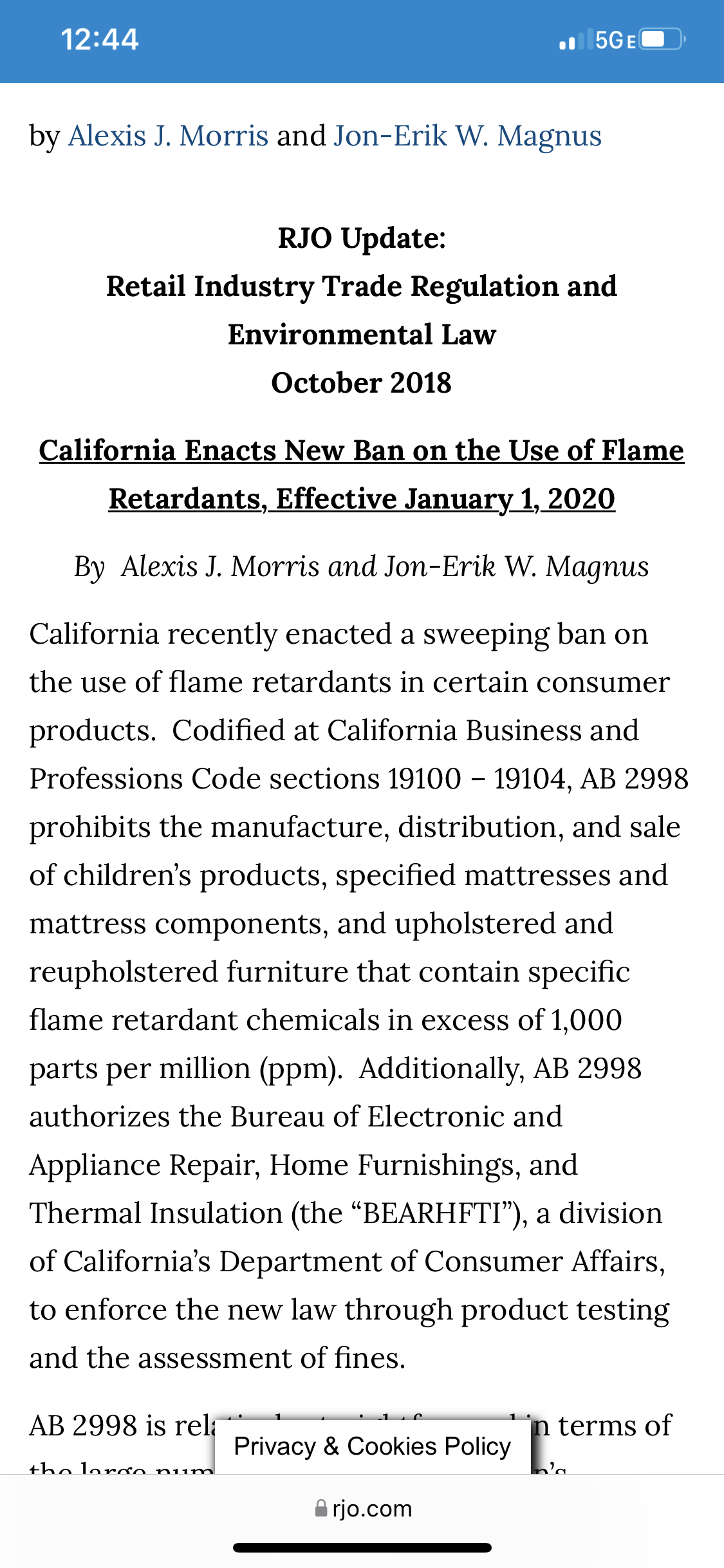

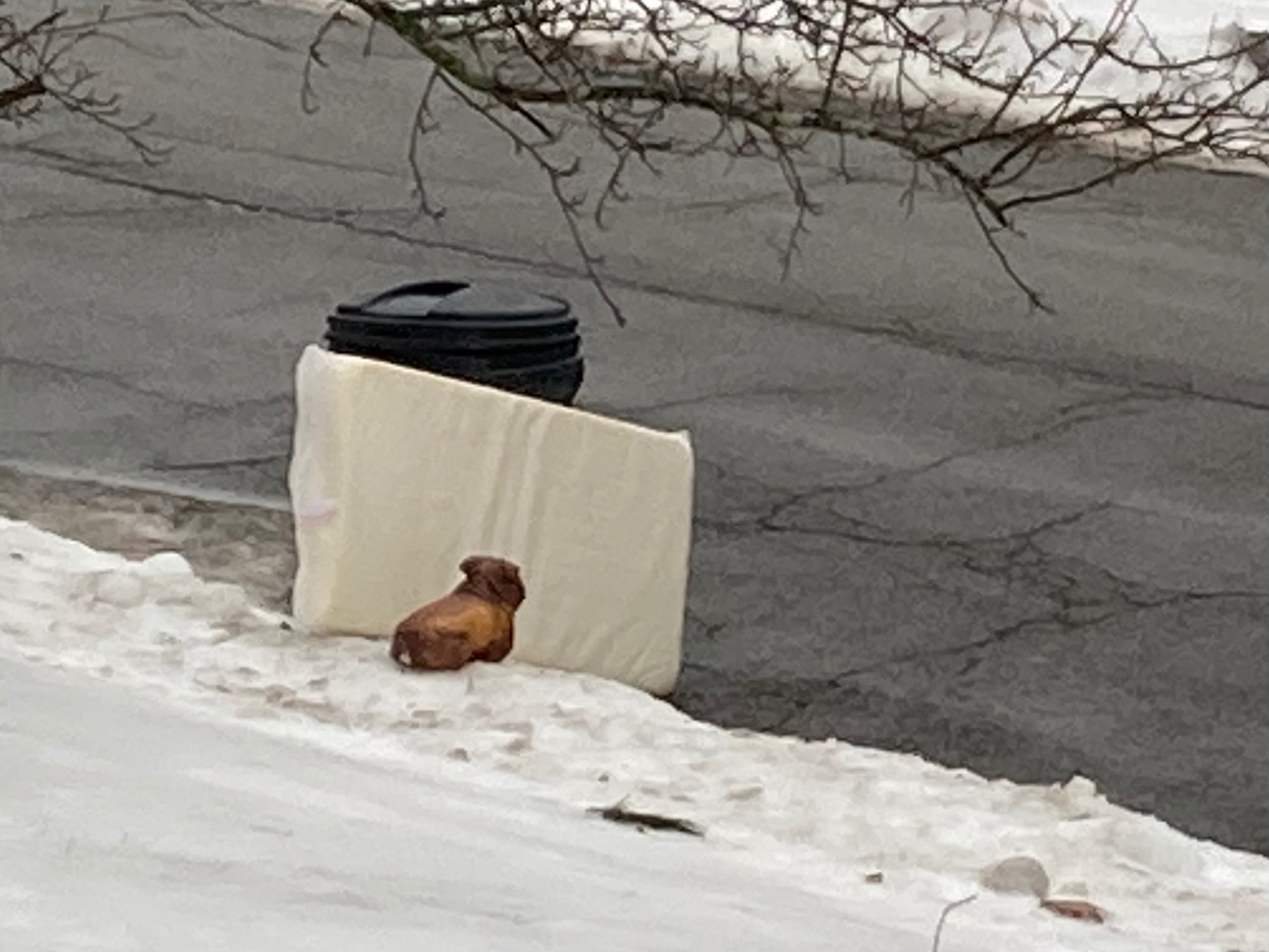
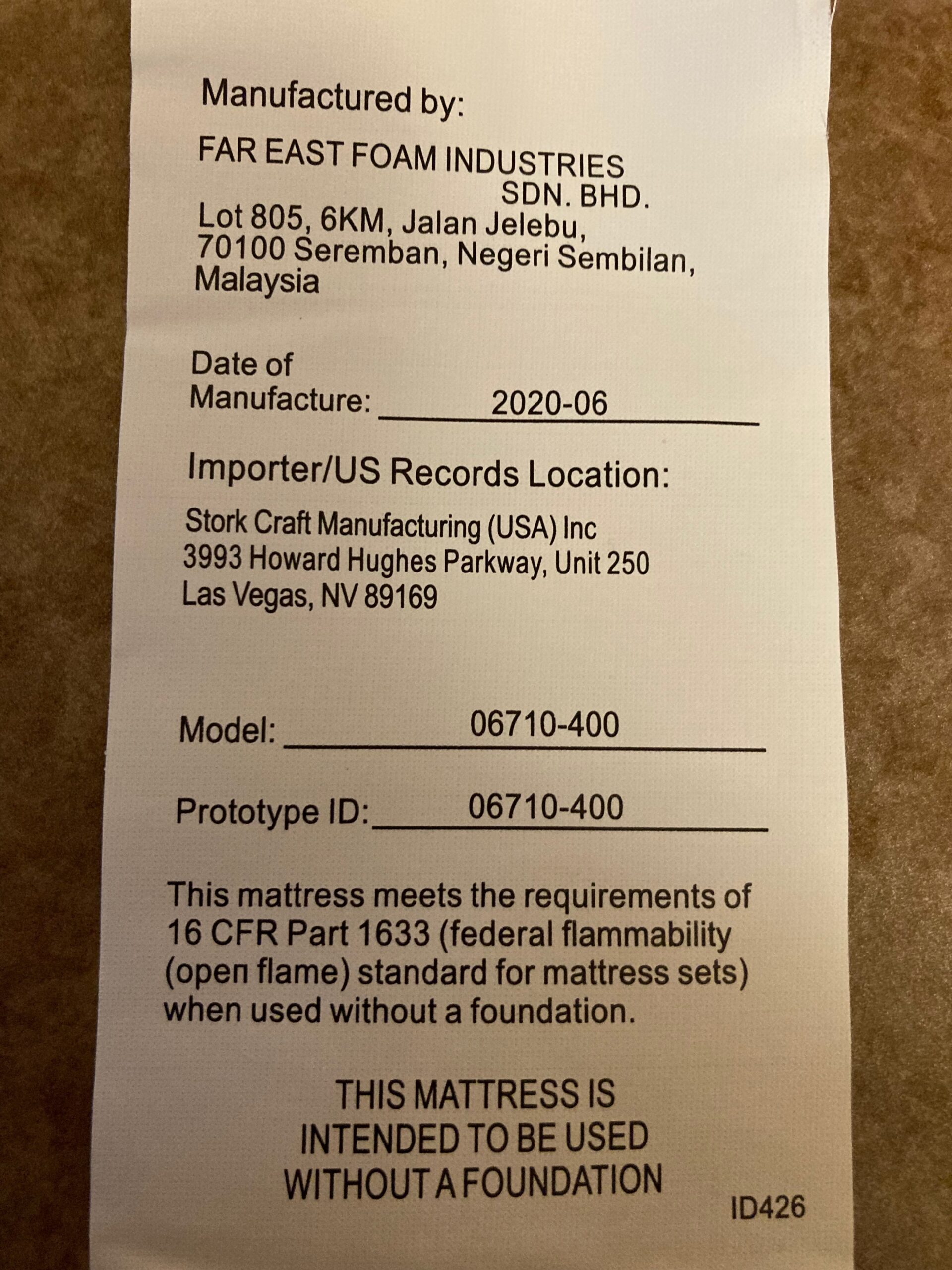

Thank you so much for this! We own four of these mattresses, they are the number 1 in their category on Amazon. I’m going to call Graco tomorrow and hopefully they will do a recall to get these out of homes. Do you have any safe crib mattress recs?
My preferred mattress brand is Naturepedic – they are an incredibly ethical company and I love their products. I sleep on a Naturepedic every night and so do my children. I asked them to be a sponsor of my work because I loved their products so much and so I have an affiliate relationship with them so that they contribute 15% of what people spend (after using a Lead Safe Mama link) in support of this work. They also give a generous discount to my readers (I think the current discount is 15%). I love them – really. And I don’t *love* a lot of businesses / products. I didn’t mention them in this post because I didn’t want it to seem like a conflict of interest situation (since my testing of this crib mattress had nothing to do with my relationship with Naturepedic) – I have been testing mattresses for 6 or 7 years now – and have only had an affiliate relationship with Naturepedic for about two years now.
Here’s my post with details:
https://tamararubin.com/2022/01/if-you-purchase-a-naturepedic-product-starting-with-a-lead-safe-mama-llc-link-naturepedic-will-contribute-15-of-what-you-spend-in-support-of-our-work-thank-you/
Tamara
Lol I purchased two Naturepedic crib mattresses last night at your recommendation and used your link and code. Thank you!! Excited to get your thoughts on leaching of antimony, Do we need to replace all bedding like sheets, blankets, or just the mattresses?
I think replacing the mattress and thoroughly washing the bedding (2 x through the wash with a good surfactant containing [mainstream] detergent – like unscented Tide or All for example – should be good enough for the bedding.) Here’s a post I have written about that:
https://tamararubin.com/2017/12/detergent/
The concern with Antimony is not “leaching” – but whether or not it can create a Lead-in-dust hazard (an inhalation / aspiration hazard) which can result in the SIDS risk as I understand it. Antimony leaching is more from food containers – I have written about that here:
https://tamararubin.com/2019/12/nlr-please-dont-ever-buy-peanut-butter-packaged-in-plastic-jars/ (and on the related peanut butter posts).
Here’s the bunny / stuffed animal post too:
https://tamararubin.com/2020/04/2014-stuffed-bunny-easter-toy-by-inter-american-products-128-ppm-antimony-causes-cancer-in-rats/
Tamara
I just heard of you while researching flame retardants and I went to check if my 1 year old’s mattress had them. I saw a comment stating your website and info about the lead, fiberglass, and antimony. After reading the article I checked my son’s mattress details and his was made in Malaysia, is model number 06710-400, but has a manufactured date of 01-2020. I am wondering if this would still be considered part of the bad batch and if I should get a new mattress.